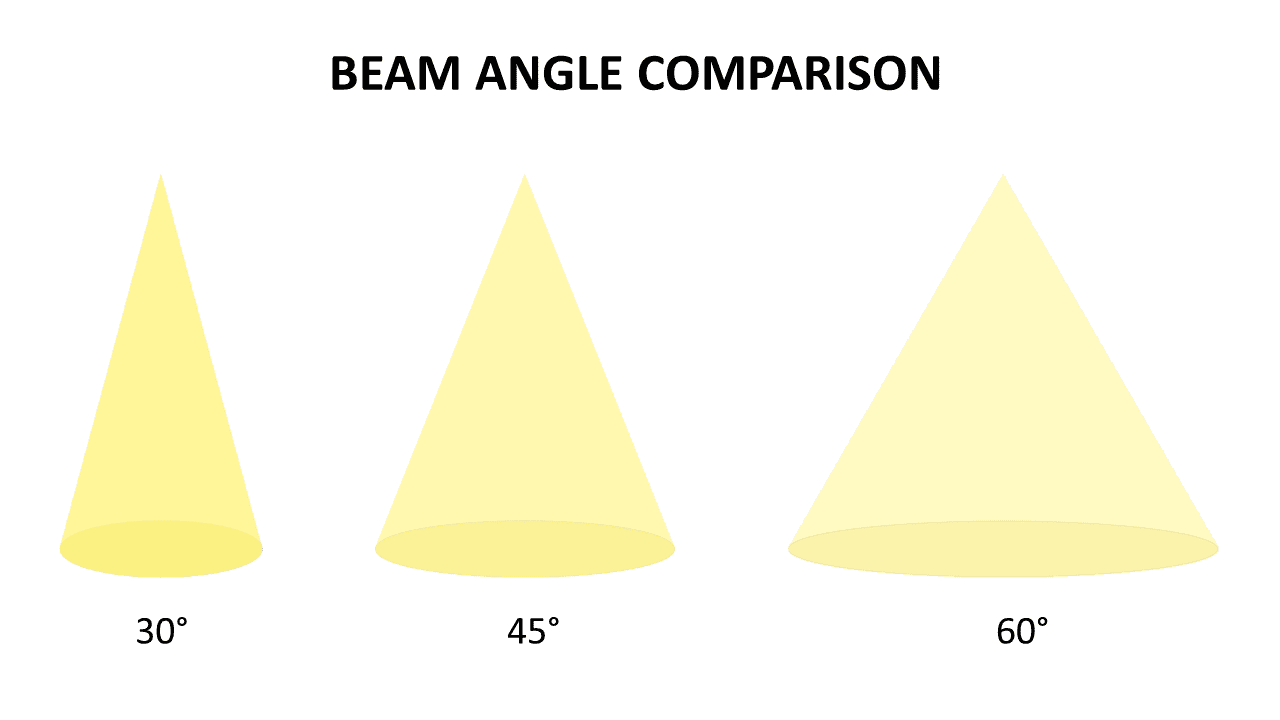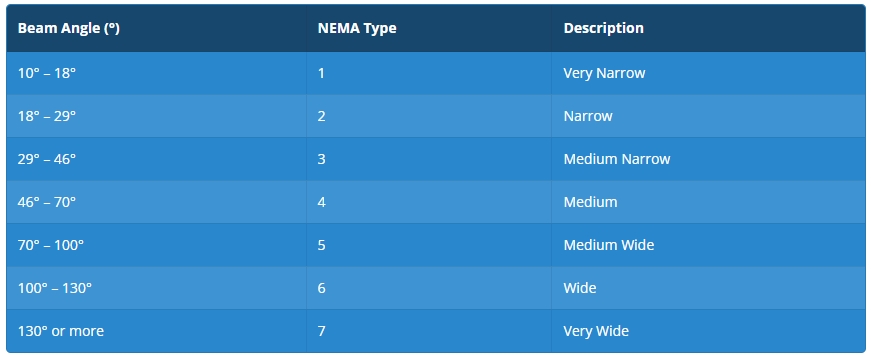The Original Manufacturer Of LED lighting
 RioTinto
RioTinto  2025-12-05
2025-12-05
The beam angle serves as a straightforward metric for optimizing light distribution within residential or commercial spaces. Contemporary lighting projects frequently require calculations of beam angle and light dispersion. While the beam angle is a common consideration in lighting design, its intricacies and practical applications are not widely understood.
What Is a Beam Angle?
The beam angle refers to the extent of light dispersion from a source, like a light bulb. A wider beam angle produces a more diffused light, albeit with reduced intensity. Conversely, a narrower beam angle results in a more concentrated light with less dispersion.

Light intensity is generally quantified in lumens. The measurement of lumens per square meter is referred to as 'lux,' while lumens per square foot are known as 'foot candles.' The overall lumens required to adequately illuminate a room vary based on the type of lighting and the dimensions of the space.
Examples:
1. What does 120 Beam Angle mean?
A 120° angle indicates the degree of the light fixture's spread. This wide beam angle is suitable for illuminating an entire room, provided the ceiling height is adequate.
2. What does Narrow Beam Angle mean?
A narrow beam angle refers to a bulb with a beam angle measuring less than 30°. There are also more specific classifications within this category, including Spot angle and Narrower beam angle.
3. Common Beam Angles
There are two approaches to defining a beam angle. One method employs degrees, such as 10°, 60°, and 120°, while the other utilizes descriptive terms like narrow beam angle, spot, wide, and wider angle. The terminology and standards for beam angles are not standardized globally.
However, the NEMA classification is the most widely recognized. NEMA, which stands for the National Electrical Manufacturers Association, is the largest organization representing electrical equipment manufacturers.

Why Is Beam Angle so Important?
The significance of beam angle cannot be overstated. It plays a crucial role in determining the area illuminated by light; a wider beam angle results in greater coverage, while a narrower angle provides less. For optimal illumination of a 40×40-foot room, one would need a 60° light positioned at the center of a ceiling that is 34 feet high, or alternatively, two 60° lights placed 10 feet away from the center of a ceiling that is 17 feet high.
Accurate calculations of light distribution are essential for achieving a well-lit space with the fewest fixtures possible. Additionally, lighting with a low or narrow beam angle can serve as an effective design choice for creating accent or ambient lighting.
RioTinto can offer wide selections of beam angles for lights based on your specific projects.
Rio Tinto ETL CETL CE Listed DMX control and Wireless RGBW wall washer, RGBW LED flood light, RGBW UFO high bay and other RGBW lighting solutions will enrich your life and buildings.
 SZRIOTINTO-LIGHTING COMPANY
SZRIOTINTO-LIGHTING COMPANY
Welcome to SZriotinto , your source for all illumination solutions.
We're dedicated to giving you the very best of outdoor lighting experience, with a focus on illumination design, lighting planing and executing of the lighting projects.